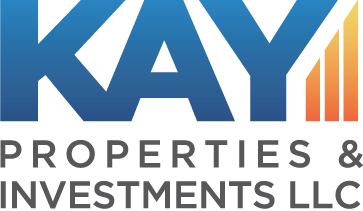By Betty Friant, Senior Vice President, Kay Properties & Investments
Kay Takeaways:
- Knowing key terms for a 1031 Exchange is important for investors
- What is the definition of “beneficial interest” and how does it relate to DST’s?
- What is a Tenant In Common Investment?
- Do you know what a Qualified Intermediary is?
Becoming a serious 1031 Exchange real estate investor can involve a significant learning curve. For example, there are many investment terms that every investor shouldknow and understand in order to better understand the nuances surrounding 1031 Exchange real estate investments and help find success as an investor.
Therefore, Kay Properties thought it would be a good idea to present some of the most important investment terms that all Delaware Statutory Trust 1031 Exchange investors should know.
- DST: This term stands for “Delaware Statutory Trust” which is an entity that is used to hold title to investment real estate. A DST is also a powerful real estate planning tool because it allows “beneficial interest” ownership where multiple investors can share ownership of a single property or an entire portfolio of properties. A DST is often paired with the 1031 Exchange. Pairing these two entities together allows for individual investors to diversify* their investment dollars into multiple properties and potentially mitigate concentration risk of over-concentration in their investment properties. This can potentially be accomplished by investing in DSTs with properties in different geographies, in many of the asset classes, and with various property managers, asset managers, and sponsoring companies.
- TIC: This term means “Tenancy in Common”, and refers to an investment arrangement where two or more individuals share the ownership rights of a property that qualifies under the rules to be used as like-kind in a 1031 Exchange. TIC investments must comply with IRS Rev Proc 2002-22 which has a limit on the number of investors. This gives the TIC entity unique challenges where each investor is named on the mortgage and each investor has the right to vote on decisions concerning the property which can be cumbersome in a co-ownership arrangement. This property can be commercial or residential. TIC allows investors to own different percentages of a property. Tenants in common can leave their share of the property to anyone of their choice upon their death.
- NNN: Anytime you see three N’s in a row when referring to real estate, it will invariably be referring to the concept of triple net lease investing. This is a lease agreement where the tenant promises to pay all expenses of the property. This includes real estate taxes, building insurance, and maintenance. Typically, these are expenses of the landlord. However, in a NNN lease agreement, the tenant pays these expenses along with rent and utility fees. Tenants generally pay a lower rent charge by taking on these additional expenses. Triple net leases have become popular as they have the potential to provide low-risk steady income to investors.
- 1031s: Section 1031 is probably one of the most familiar passages in the Internal Revenue Code (IRC). These numbers refer to an IRS provision that allows individuals to defer tax on qualifying exchanges of like-kind real estate. To utilize this tax strategy investors must take certain steps when selling and buying real estate. The replacement real estate must be like-kind, tax must be paid on any boot in the year of the exchange, and replacement real estate must be identified within 45 days and acquired within 180 days to utilize the 1031 exchange.
- QI: The letters “QI” typically refer to a Qualified Intermediary. The Qualified Intermediary is an accommodator or facilitator that works as an entity that facilities 1031 tax-deferred exchanges. They act like the glue that puts the buyer and seller of property together into the form of a 1031 Exchange. A QI is an individual who enters into a written agreement with the taxpayer of a property. The QI acquires the relinquished property from the taxpayer, transfers the relinquished property to the buyer, acquires the replacement property from the seller, or transfers the replacement property to the taxpayer.
- PPM: Anytime an investor isinvolved with a private or public investment vehicle, a Private Placement Memorandum (PPM) will be involved. A PPM is a document that divulges everything an investor needs to know before investing in a Regulation D Offering. The PPM is very beneficial to an investor as it details the investment opportunity, disclaims legal liabilities, and explains the risk of losses. All real estate investors are strongly advised to carefully read the PPM and consult their tax attorney or CPA prior to investing.
- IOI: When real estate investors become interested in a particular real estate asset or portfolio, they will usually request more information on the property in question. In many cases, the seller will provide a document called an Indication of Interest (IOI). An IOI is an informal proposal that is non-binding and designed to provide the investor more information on the investment. For example, IOI’s typically include property details like leasing data, square footage, and market overview. An IOI might also include due diligence plans, aerial photos, and site maps. Finally, the IOI will typically include information about the sponsoring seller of the real estate asset.
Knowing and understanding these acronyms will help in placing you on a path of success in the investment world. You might want to keep this list of the alphabet soup of acronyms handy as you research the world of investment real estate.

